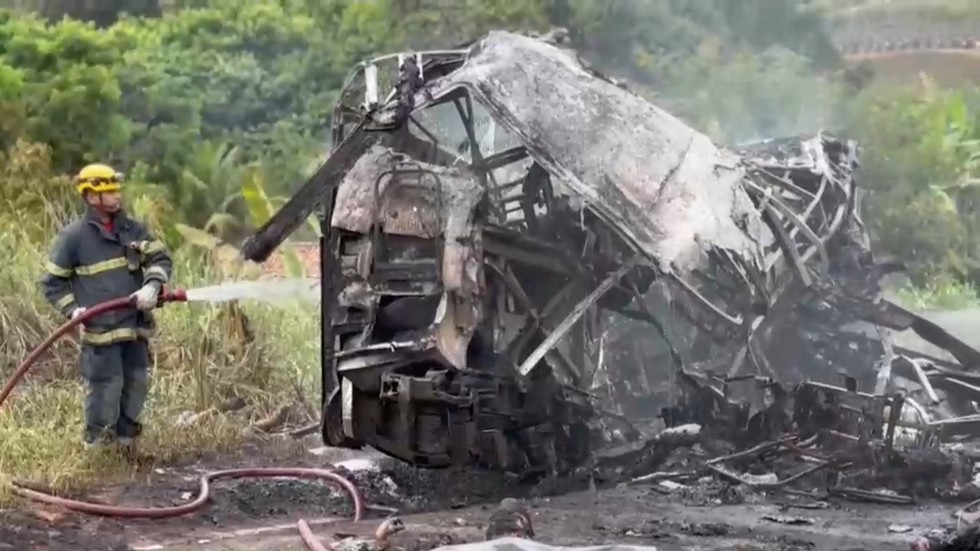NEW DELHI: Thawing permafrost in
Alaska
is transforming some of the state’s clear waters into a murky, rusty orange hue. As the frozen layer of soil melts, minerals become exposed and seep into the water, according to a study published on May 20 in the journal Nature Communications: Earth and Environment.
“The more we flew around, we started noticing more and more orange rivers and streams,” said study co-author and National Park Service ecologist Jon O’Donnell.
“There are certain sites that look almost like a milky orange juice. Those orange streams can be problematic both in terms of being toxic but might also prevent migration of fish to spawning areas.”
Permafrost, which is rock or soil containing ice that remains frozen for two or more years, covers about 80 percent of the ground in Alaska. The state is warming two to three times faster than the global average, causing significant thawing of permafrost, a report in Popular Science said.
As ice-filled permafrost begins to thaw, it can turn into mud that cannot support the weight of the soil or vegetation above it. This can lead to damage to human-built infrastructure including buildings, homes, pipes, and roads. Thawing permafrost can also expose organic matter, including the remains of dead plants, which release methane and carbon dioxide into the atmosphere. Additionally, long-dead viruses or bacteria that could potentially threaten human health may be released.
Visible from space
In 2018, O’Donnell first noticed a river that appeared rusty, despite being clear the year before. To investigate further, O’Donnell and the research team documented and sampled some of the impaired waters. They examined 75 locations across northern Alaska’s Brooks Range, an area about the size of Texas.
“The stained rivers are so big we can see them from space,” said study co-author and University of California, Davis geochemist Brett Poulin. “These have to be stained a lot to pick them up from space.”
Poulin observed that the staining in the water appeared similar to what happens during acid mine drainage. However, there were no mines near the impaired rivers, which include the Salmon River and other federally protected waters.
Chemical changes
The researchers hypothesize that as the permafrost melts, the minerals stored inside the frozen ground are released. Metal ores that were once locked up are then exposed to water and oxygen, releasing acid and metals into the river.
“Chemistry tells us minerals are weathering,” Poulin explained. “Understanding what’s in the water is a fingerprint as to what occurred.”
Initial samples collected in June and July 2023 showed some waters had a pH of 2.3, while the average pH for these rivers is 8. This indicates that sulfide materials are weathering and making the water more acidic. The researchers also found elevated levels of iron, zinc, nickel, copper, and cadmium. “One of the most dominant metals is iron. That’s what is causing the color change,” noted UC Davis Ph.D. candidate Taylor Evinger.
Implications for ecosystems
The team is currently in the second year of a three-year grant aimed at understanding what is happening in the waters, determining what other areas could be at risk, and assessing what it means for fishing stocks and drinking water. The problem is growing, affecting habitat, water quality, and other ecological systems. It is degrading otherwise healthy habitats and could threaten the safety of drinking water in rural areas.
“There’s a lot of implications,” O’Donnell said. “As the climate continues to warm, we would expect permafrost to continue to thaw and so wherever there are these types of minerals, there’s potential for streams to be turning orange and becoming degraded in terms of water quality.”
More detailed work is needed to better understand the problem and to see if rivers and streams can rebound after colder weather restores permafrost. Satellite images dating back to 2008 show that the waters have been changing color for well over a decade and could only be growing over time.
“The issue is slowly propagating from small headwaters into bigger rivers over time,” O’Donnell said. “When emergent issues or threats come about, we need to be able to understand them.”

 7 months ago
28
7 months ago
28









